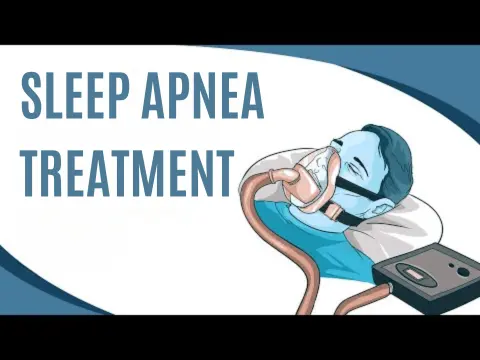
Sleep apnea, a condition that disrupts breathing during sleep, can significantly impact the quality of life—for both those experiencing it and their caregivers. Thankfully, a range of treatment options is available, from medical interventions to lifestyle changes. This article provides an in-depth look at these options, focusing on their types, dosages (when applicable), benefits, and potential side effects, along with actionable advice for caregivers to help ensure treatment success.
What Is Sleep Apnea? A Quick Overview
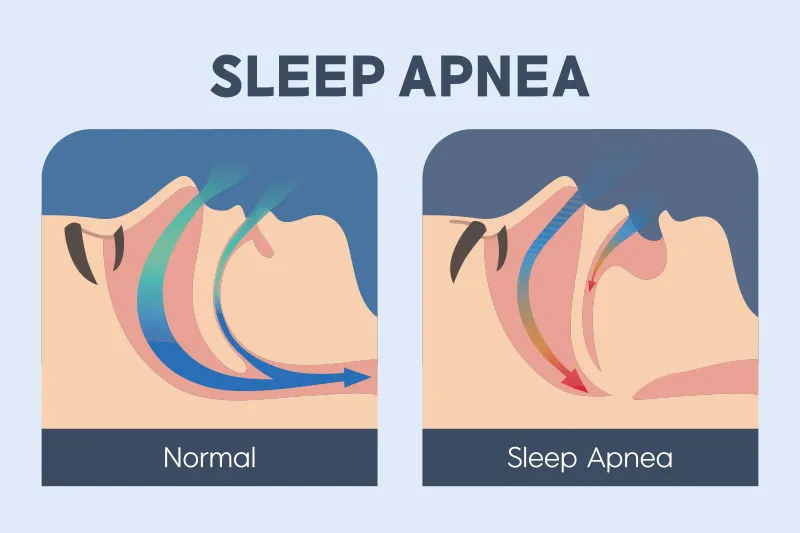
Credit: www.sandalwooddental.com
Sleep apnea is a chronic sleep disorder characterized by repeated interruptions in breathing during sleep. These interruptions can lead to fragmented sleep, low oxygen levels, and significant health risks if untreated.
- Symptoms of Sleep Apnea:
- Loud, persistent snoring
- Gasping for air during sleep
- Daytime fatigue and irritability
- Poor concentration
If you suspect sleep apnea, consult a healthcare provider for a diagnosis and treatment plan. Ignoring the symptoms can lead to long-term complications like heart disease, stroke, and diabetes.
Types of Sleep Apnea
- Obstructive Sleep Apnea (OSA):
- Most common type caused by airway blockages due to soft tissue collapse.
- Central Sleep Apnea (CSA):
- Less common, results from brain signal issues that fail to regulate breathing.
- Complex Sleep Apnea Syndrome:
- A combination of OSA and CSA, requiring specialized care.
Causes and Risk Factors
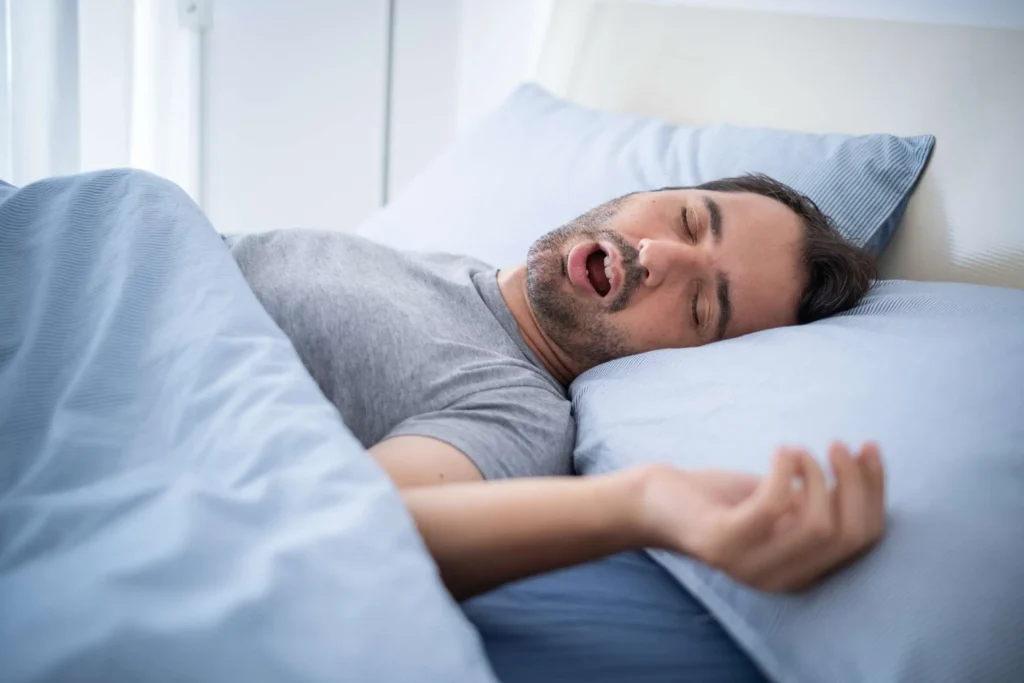
Credit: www.health.com
Common Causes:
- Relaxation of throat muscles during sleep.
- Obesity leading to excess tissue around the airway.
- Structural abnormalities like enlarged tonsils or nasal polyps.
Risk Factors:
- Age: More common in adults over 40.
- Gender: Men are at higher risk, though women’s risk increases post-menopause.
- Family History: A genetic predisposition may increase likelihood.
- Lifestyle Factors: Smoking, alcohol consumption, and sedative use can worsen symptoms.
Medical Treatments for Sleep Apnea
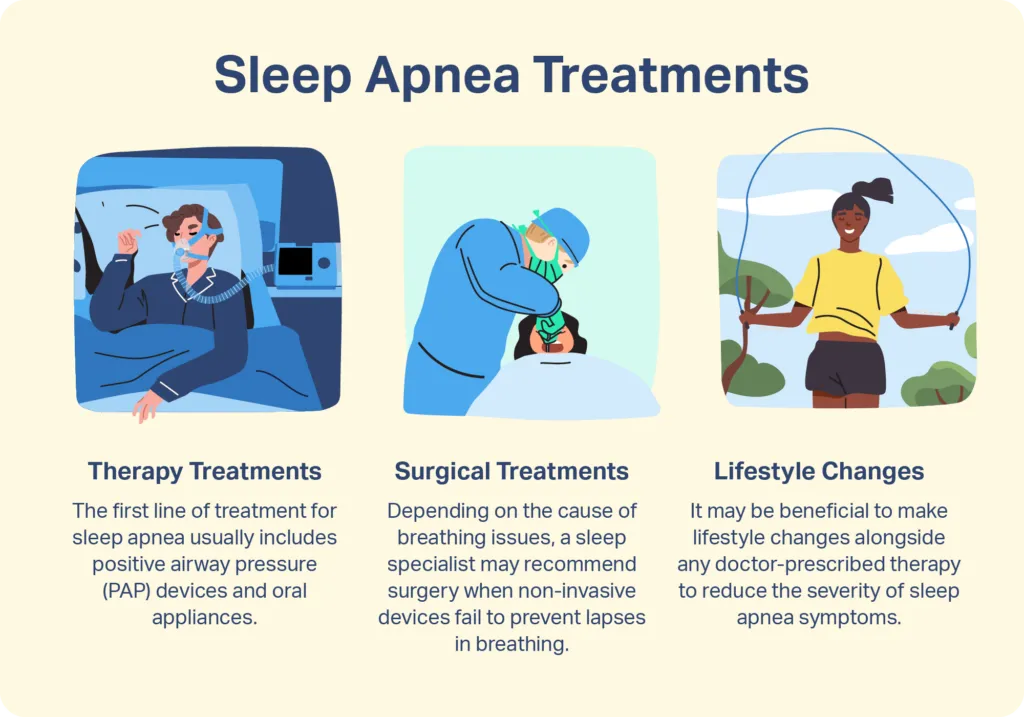
Credit: www.sleepfoundation.org
1. CPAP Therapy (Continuous Positive Airway Pressure)
How It Works: A CPAP machine delivers steady air pressure through a mask to keep airways open.
- Best for: Moderate to severe OSA.
- Benefits:
- Reduces snoring and apnea episodes.
- Improves sleep quality and daytime alertness.
- Consider a heated humidifier attachment to reduce nasal dryness.
Common Challenges:
- Mask discomfort and nasal dryness.
- Adjusting to the machine noise.
2. Oral Appliances
How They Work: These custom-fitted devices reposition the jaw or tongue to prevent airway obstruction.
- Best for: Mild to moderate OSA or as an alternative to CPAP therapy.
- Benefits:
- Portable and non-invasive.
- Easier to use than CPAP machines.
Possible Side Effects:
- Jaw pain, teeth alignment changes, and salivation issues.
3. Surgical Treatments
Surgery can address structural issues causing sleep apnea. Common procedures include:
- Uvulopalatopharyngoplasty (UPPP): Removes excess throat tissue.
- Maxillomandibular Advancement (MMA): Repositions the jaw to expand the airway.
- Hypoglossal Nerve Stimulation: An implant stimulates tongue muscles to prevent airway collapse.
Best for: Severe OSA unresponsive to other treatments.
- Recovery Tip: Follow a post-surgical care plan for optimal results.
4. Lifestyle Adjustments
Simple changes can significantly improve mild OSA:
- Weight Loss: Reduces excess tissue around the airway.
- Sleeping Position: Side-sleeping prevents airway collapse.
- Avoid Alcohol/Sedatives: These relax throat muscles, worsening apnea.
Amazon Recommendation: Sleep Position Pillows
5. Medications
Medications don’t treat sleep apnea directly but can address contributing factors like nasal congestion. Common options include:
- Nasal Steroids: Relieve congestion from allergies.
- Sedatives (only under supervision): Improve sleep for CSA patients.
Benefits of Sleep Apnea Treatments
- Improved Sleep Quality: Reduced disruptions lead to deeper, more restorative sleep.
- Enhanced Health: Lowers the risk of heart disease, stroke, and diabetes.
- Better Mood and Energy: Alleviates daytime fatigue and irritability.
Caregiver Tips for Maximizing Treatment Success
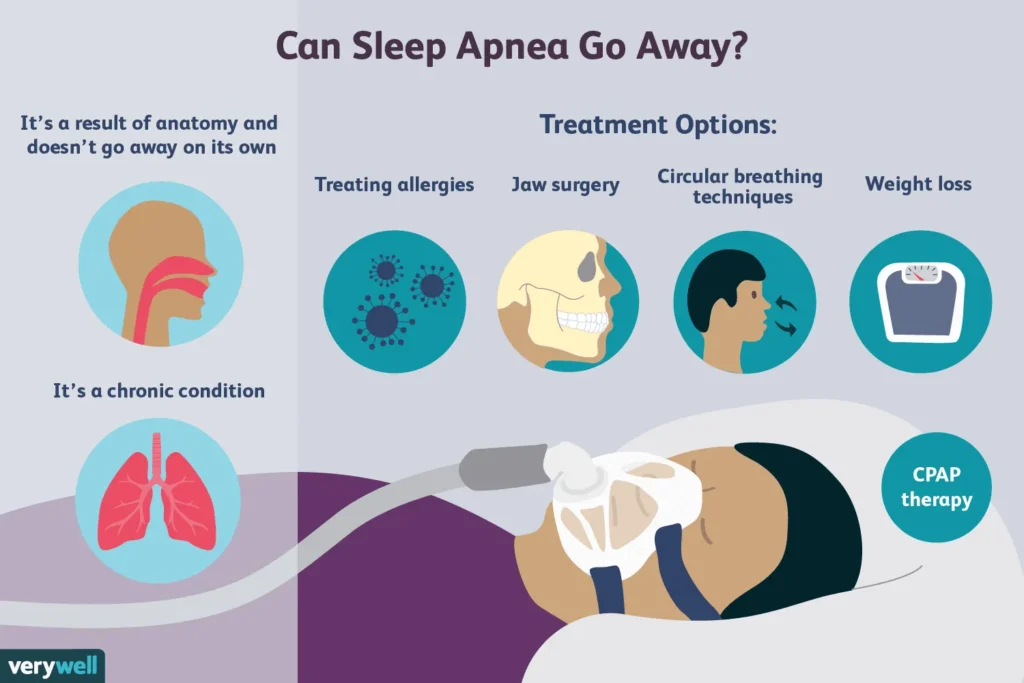
Credit: dentistinvaishali.com
As a caregiver, your role is vital in ensuring adherence to treatments and creating a supportive environment. Here’s how you can help:
- Encourage Consistency: Remind the individual to use their CPAP machine or oral device every night.
- Track Progress: Keep a journal to monitor sleep patterns, symptoms, and any side effects from treatments.
- Promote Open Communication: Regularly check in about comfort levels and challenges with treatments.
- Seek Professional Guidance: Don’t hesitate to involve sleep specialists or counselors when needed.
FAQs About Sleep Apnea
Q: Can sleep apnea be cured? A: While there is no universal cure, many treatments effectively manage symptoms.
Q: How long does it take for CPAP therapy to show results? A: Most users see improvements within a few days to weeks of consistent use.
Q: Are natural remedies effective for sleep apnea? A: Lifestyle changes like weight loss and positional therapy can help mild cases.
Conclusion: Empowering Caregivers to Make a Difference
Sleep apnea treatments have revolutionized the way individuals manage this condition, ensuring better health and improved quality of life. Whether you opt for CPAP therapy, oral devices, or lifestyle changes, finding the right approach can transform your sleep

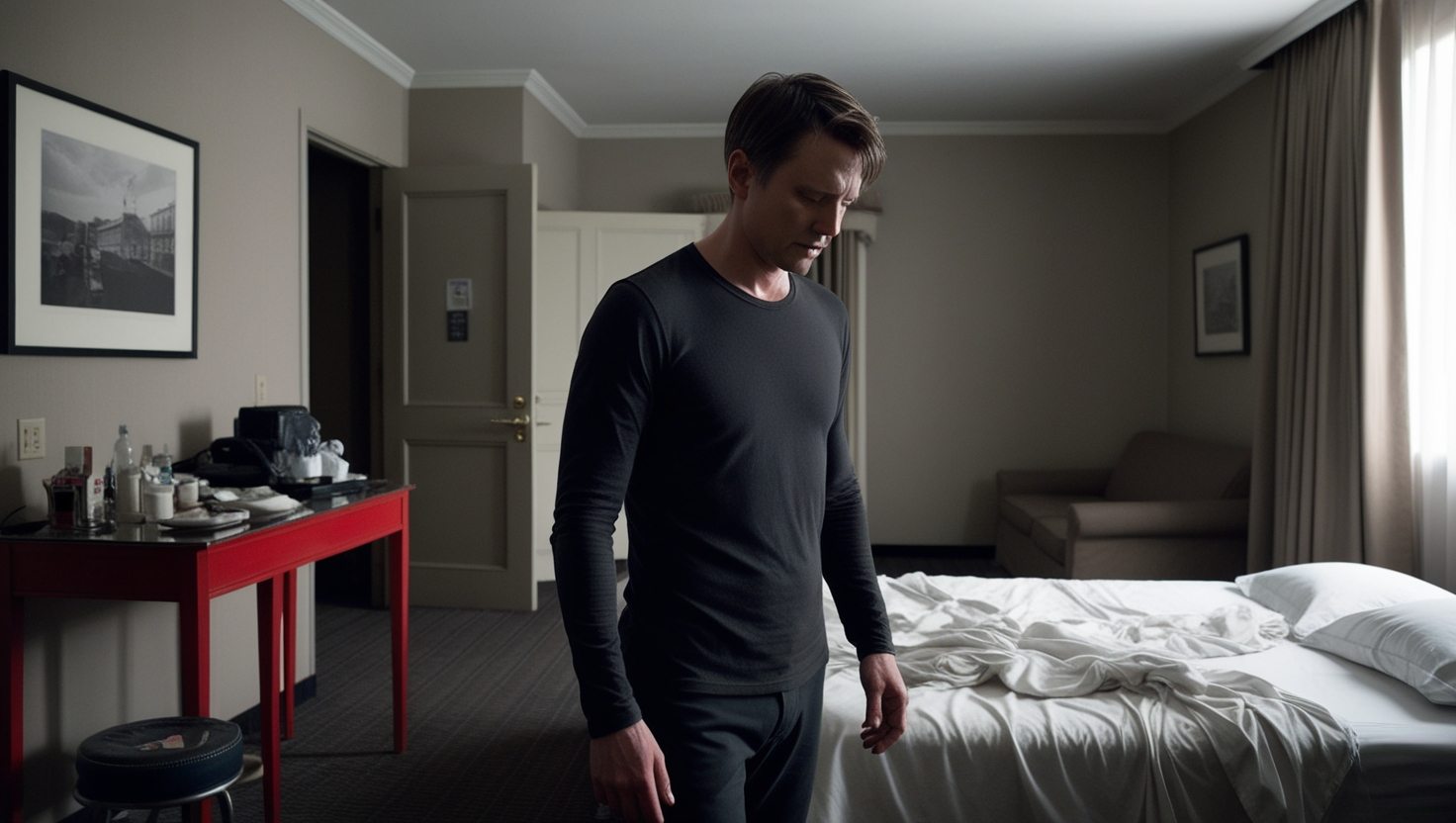
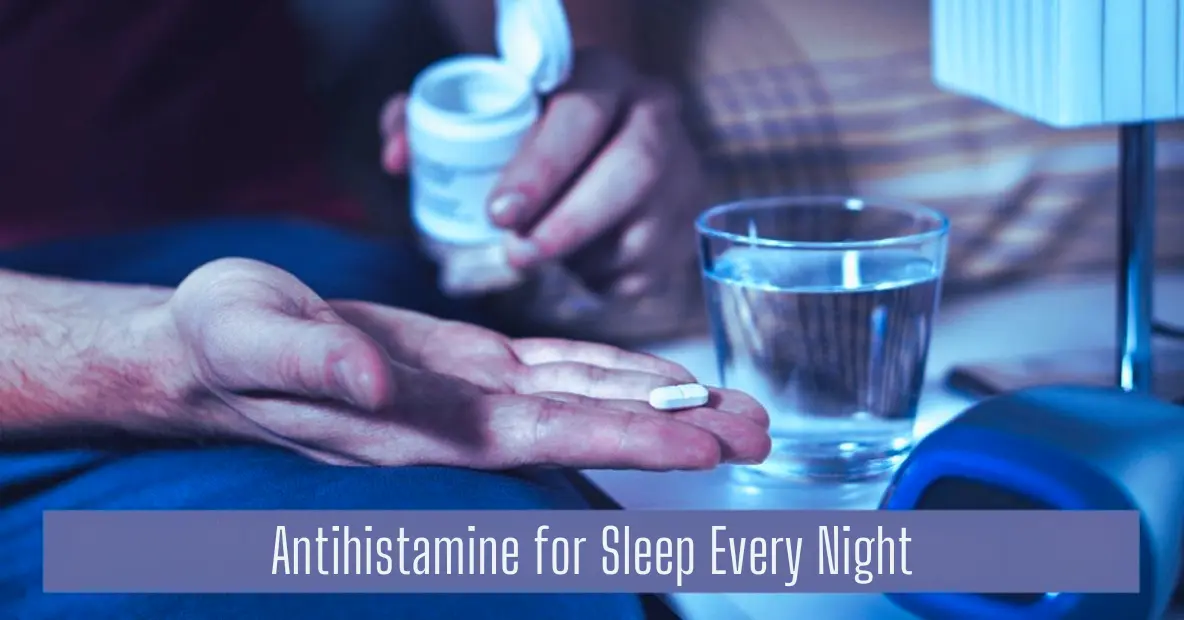
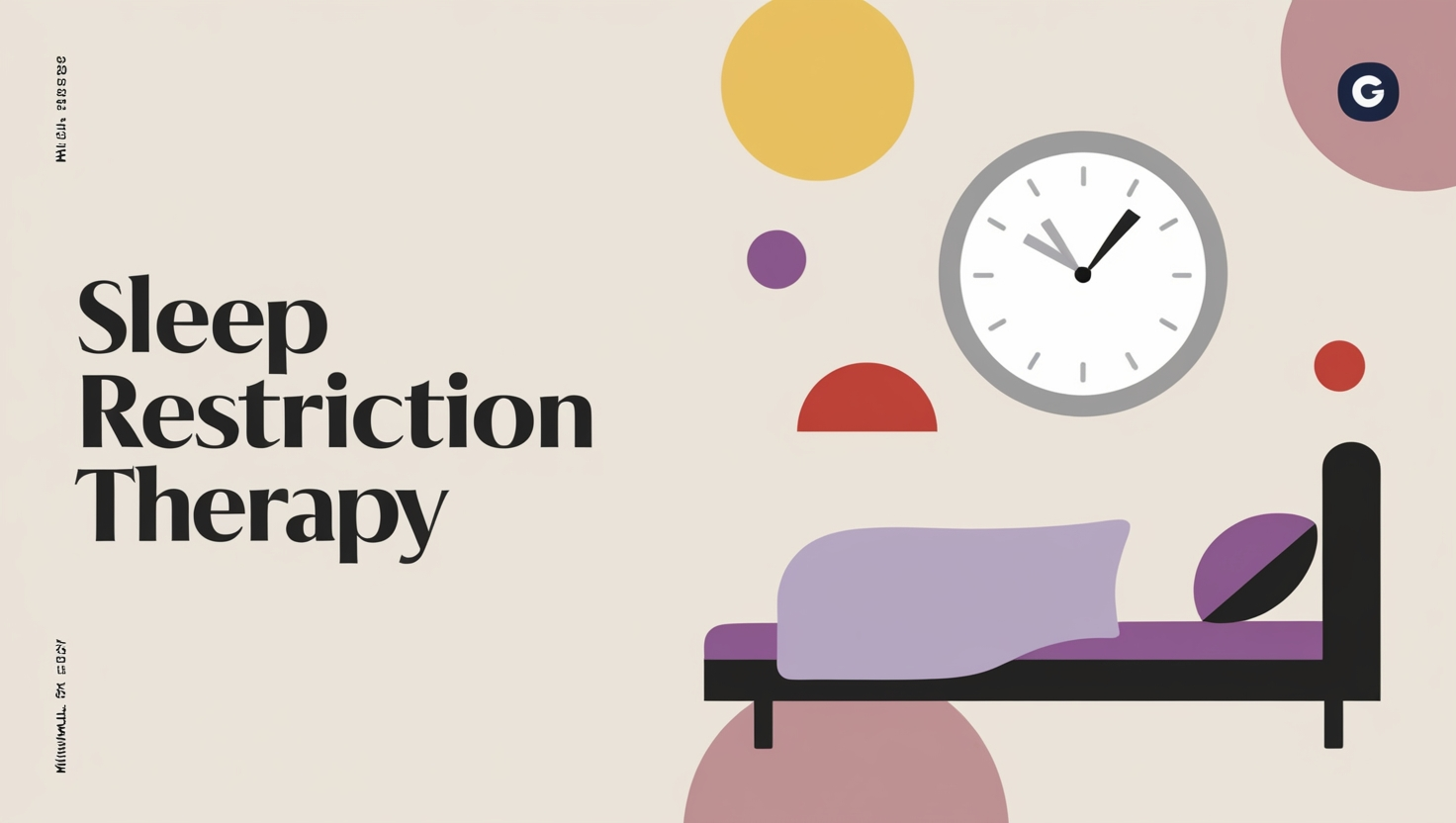

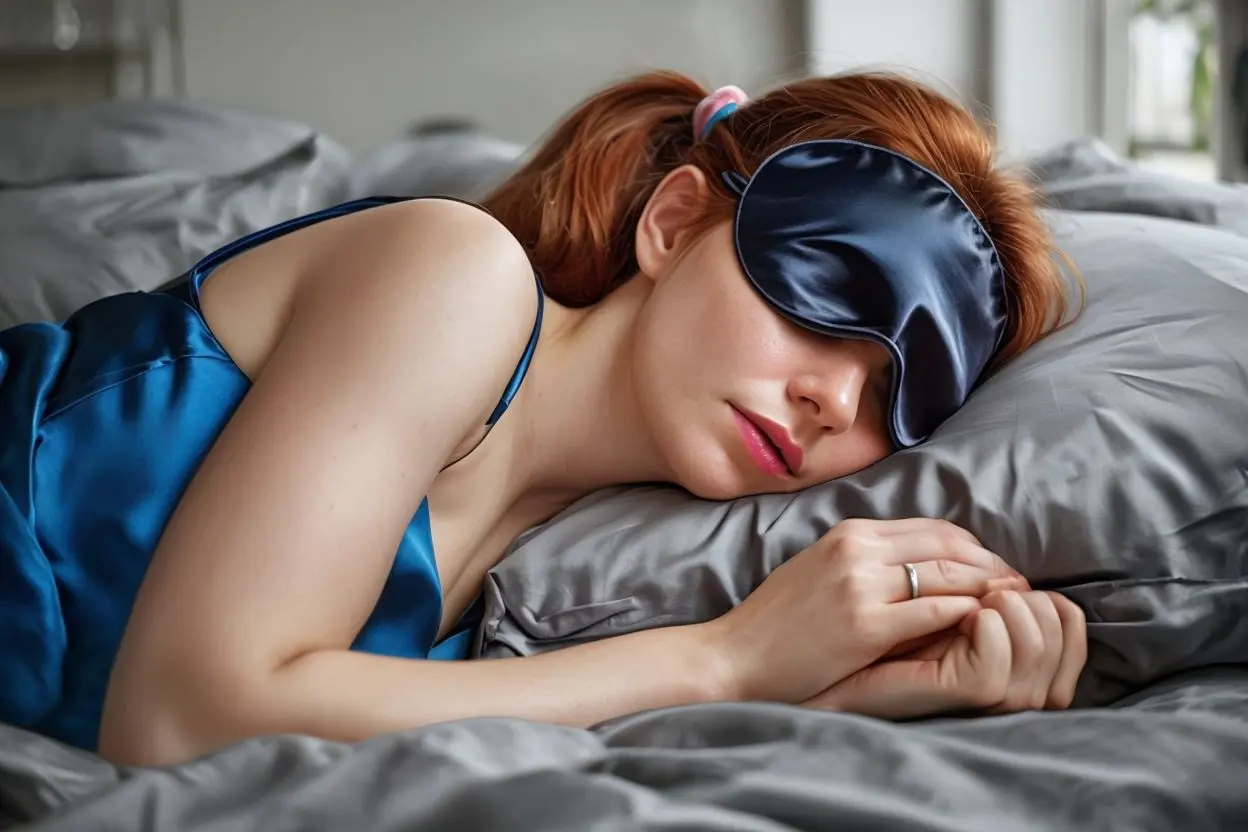

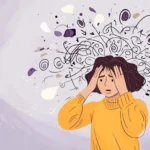

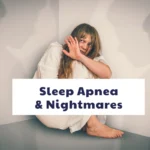




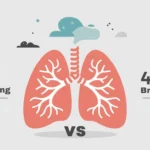

1 thought on “Sleep Apnea Treatments: Types, Dosage, Benefits, and Side Effects”
Comments are closed.